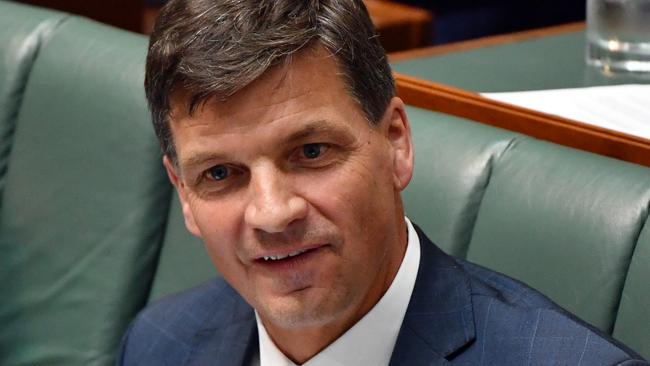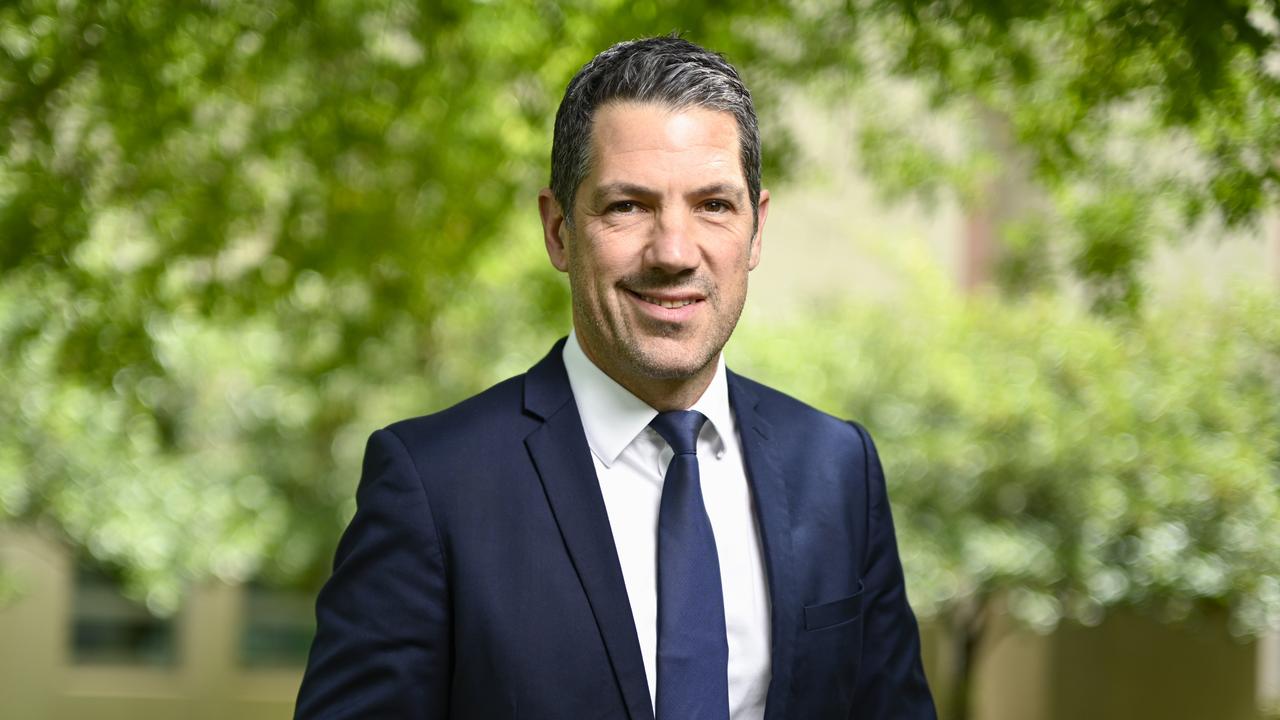Renewables key to carbon cuts as 100 technologies in frame
Scott Morrison’s plan to seek deeper cuts to Australia’s carbon emissions will consider more than 100 new technologies.

Scott Morrison’s plan to seek deeper cuts to Australia’s carbon emissions will consider more than 100 new technologies, predicts a doubling of renewable energy in the electricity grid within 10 years and aims to modernise high-polluting industries.
A draft technology investment roadmap, to be released later this year, is examining emerging developments in hydrogen, carbon capture and storage, lithium production, biofuels and waste-to-energy.
Energy and Emissions Reduction Minister Angus Taylor and Resources Minister Matt Canavan on Monday flagged initiatives supporting CCS and investment in lower-emission technologies.
The Australian can reveal the government is close to finalising its technology investment blueprint, which will take advantage of an increasing international focus on “decarbonisation”.
As the government banks on renewable energy in the National Electricity Market exceeding 50 per cent by 2030, compared with about 23 per cent under the 2020 Renewable Energy Target, Mr Taylor said there was “enormous potential in established and emerging technologies”.
“The best way to deliver on and beat our international commitments is through new, productive technologies and practices that reduce emissions while maintaining or strengthening economic growth,” he said.
“The government is investing in lower-emission technologies with the potential to deliver solutions that strengthen our economy, not weaken it.”
The Prime Minister on Sunday signalled a shift in the government’s approach to climate change, flagging deeper cuts to carbon emissions.
Mr Morrison, who has proposed a royal commission following the bushfires disaster, also claimed the government may not need to use Kyoto carry-over credits to “meet and beat” its 2030 emissions reduction target after coming under pressure to support more ambitious commitments.
The government’s investment roadmap examines more than 100 technologies, including energy efficiency, CCS, hydrogen and advances in agriculture such as feed supplements to reduce methane emissions and ways to measure and track carbon sequestration in soils. It will establish a framework for government investment priorities in emissions-reducing technologies over the short (to 2022), medium (to 2030) and long (to 2050) terms.
Economics professor Warwick McKibbin, who did the modelling for the government’s Paris Agreement target and has advised independent MP Zali Steggall and John Howard, said the answer to cutting emissions was a price signal in the economy that had bipartisan support.
Professor McKibbin said the market-based mechanism should be economy-wide and put a higher price on future carbon, making it cheaper to gradually lower emissions without the need to do it all at once.
“The key is to have something that will lead to reductions in Australia that can be leveraged on the global stage to demonstrate to the world that even a carbon-intensive economy like Australia can actually decarbonise relatively cheaply,” he said.
“Another important issue is to make sure people who take action benefit and people who are negatively impacted are compensated. You want to build a constituency in business and the community that considers continuing with the policy to be in their self-interest.”
Professor McKibbin, the director of the Australian National University’s Centre for Applied Macroeconomic Analysis, said the government might achieve its 26-28 per cent emissions reduction target by 2030 without using Kyoto carry-over credits “but probably won’t”.
“The Kyoto credits are there for a reason, because Australia exceeded targets under the Kyoto Protocol,” he said.
“When we did the modelling, we did look at what happens if in fact you didn’t have access to international offsets, which is the same thing as Kyoto credits. We found if you don’t access them, the cost of meeting the target is higher unless you were going to hit the target anyway, in which case they’d have no value.”
Former Treasury secretary Ken Henry said the least costly means of reducing emissions was an economy-wide price on carbon achieved through an emissions trading scheme. “That’s always been the case, and always will be the case,” he said.
Senator Canavan, a strong supporter of the coal industry, said there was an ongoing need for Australia to play a leading role in the development of technology that could help improve global environmental outcomes.
“We’ve often led the charge on carbon capture and storage, hydrogen and renewable energy. It’s a real advantage we have given our high quality research intuitions and their ability to punch above their weight on a world stage,” Senator Canavan said.
“Of course we’ll continue to develop policy, that’s what governments do. For example in my own area, decisions we’ll have to take include how we support carbon capture and storage initiatives going forward. We have a number of projects being finalised.”
Moderate and conservative Coalition backbenchers were largely appeased by Mr Morrison’s declaration that the government’s climate policies would evolve to reduce emissions even further without hurting jobs or hiking up electricity prices, but a bloc of Queensland MPs has warned against doing more than the government has already committed to under the Paris Agreement.
Victorian Liberal MP Katie Allen, the member for the inner-Melbourne seat of Higgins, said she was excited the government was “starting to move in the right direction” on climate action but Australia needed to be more ambitious on renewables.
Tasmanian Liberal senator Eric Abetz said it was a statement of common sense that the government would continually evolve its climate policies. The Australian understands the government’s technology roadmap priorities will involve input from industry, the finance sector, researchers and department officials.
Annual statements of technology priorities will include the measurement of the impact of emissions reduction investments and allow a data-driven basis for the government to guide future investments in specific technologies.
Investments already made by the government, including injections into the Climate Solutions Fund, the Australian Renewable Energy Agency and Clean Energy Finance Corporation, will be measured against new priorities.







To join the conversation, please log in. Don't have an account? Register
Join the conversation, you are commenting as Logout